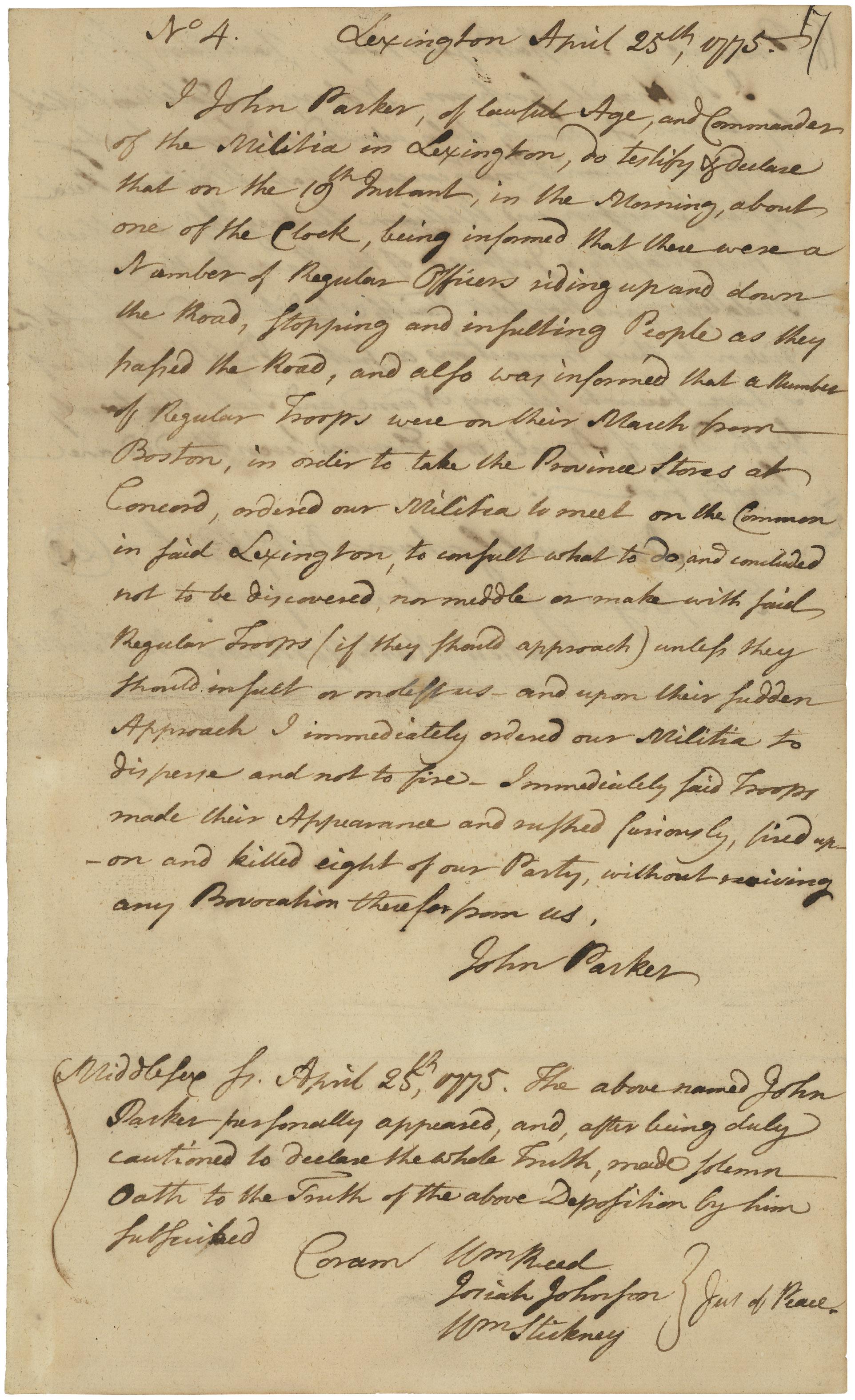Click on the document for a full PDF file version:

Above: Deposition of Captain John Parker dated 25 April 1775, concerning the Battle at Lexington, (ARC Identifier: 595246) Massachusetts State Papers, 1775-1787; Records of the Continental and Confederation Congresses and the Constitutional Convention, 1765-1821; Record Group 360; National Archives